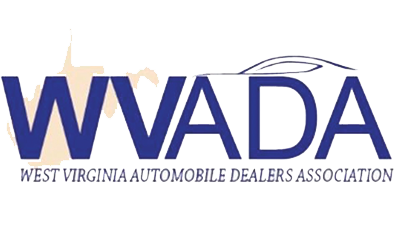By The West Virginia Automobile Dealers Association
Dealerships make great multigenerational family businesses. However, new generations regularly enter the workforce before previous generations have retired; as a result, some dealerships may have as many as four different generations working together. Managing them all presents a challenge for even the savviest business owners. At the same time, it’s essential to realize that the workplace has always had multiple generations. What’s new is the increased rate of changes that have been caused by technology, such as the internet. Continued growth requires adapting more quickly now than in the past, but that adaptation is not an impossible task, and other businesses also share it.
Now is a good time to consider how to make your multigenerational dealership stronger in the years to come. Big changes are on the horizon with autonomous vehicles and the new power sources of the expanding hybrid and electric market. Some observers even claim that privately owned dealerships are on their way out, but they’ve claimed that before, and it didn’t happen. The truth is, nobody knows how things are going to play out, but there is always room for success if you understand your strengths and weaknesses and make your plans accordingly. That includes any succession plans you have. Be thinking not just about today but about how power will transition within the company down the road.
If you are a family dealership, the most important thing to understand is that each generation has its own perspective, skills and experience to contribute.
- If you can create a workplace that embraces those perspectives, you can increase collaboration, engagement, and productivity throughout the business.
- If you understand potential conflict points, you can often prevent conflict or transform it into something constructive.
The two major generations to consider right now are the two with the largest number of members: the baby-boom generation and millennials.
- When members of the baby-boom generation started their careers, long hours and a male-dominated workplace were the norms. It was a time of clear expectations and specific deadlines. Companies picked up the cost of dinners and taxi rides to reward employees as they put every available minute into their work.
- By the time millennials entered the workforce, times had changed enormously. The atmosphere was more egalitarian and included both men and women. Millennial expectations prioritized work-life balance and flexibility in how and where employees could work. It also included time off for new parents of both genders.
Improve your management of a diverse workforce by concentrating on the following specific areas:
- Engagement and collaboration
- Accountability and trust
- The advantage of being diverse
Engagement and Collaboration
Too many employees have no personal investment in their work:
- Gallup kept records about employee engagement between 2000 and 2015. During that time, only 32% of U.S. employees considered themselves committed to, enthusiastic about and involved in their jobs.
- The results were even worse worldwide, where only 13% of employees considered themselves engaged in their work.
Happy employees are engaged in their work and are more likely to collaborate with their peers. That collaboration is a virtuous cycle that increases efficiency and, therefore, also increases productivity. As employees take ownership of their work, they pay attention to the details of their own work, but they also look out for others and the organization. If your business is a family business, you have an advantage; the family members who work at the dealership are likely to have more of a motivation to be involved than someone outside the family.
Of course, you will have other people outside the family who are also working in the business. How do you increase their engagement? You have to actively decide what kind of culture you want to build, and then intentionally create precisely that.
People become engaged when they feel they are valued team members. With that in mind, one suggestion would be to enlarge the number of decision-makers within the company so that employees know they have a genuine opportunity to make their voices heard and to have a say in how the business is run. If that idea appeals to you, Johann Hari wrote a book in 2018 called Lost Connections about the depression and anxiety that happen when people are disengaged not just from work but from life. He presents a good argument for making your business a cooperative instead of the more traditional hierarchical arrangement we expect to see in businesses. It’s worth reading.
However you want to decide on the company’s objectives, though, you need objectives for the entire organization. You also need to ask people to work toward making those objectives a reality. They probably won’t cooperate unless they see why cooperation is to their benefit, so think through that part of it as well.
Gallup identified the following best practices that can improve employee engagement:
- Engagement isn’t something to think about once a year and then forget. Make it something your dealership is always involved in improving.
- You need some ideas about what to do that will be effective. Search the internet for “best practices for improving employee engagement.” The results will give you many different ideas for action. You are in the best position to decide what ideas would work for you, but it’s a good idea to be aware of what other companies, even in other industries, are doing. For example, you should check out what Google is doing to engage its employees. Whether you open up the decision-making or not, you need to ask your employees what they want to see to be more engaged with their work.
- Use the feedback you get from employees and make a plan.
- Take a baseline measurement before implementing plans. You can decide how far ahead you want to look, but three years is a good number: long enough for big changes, but short enough to keep actions and milestones realistic.
- Look at tactical elements that improve performance. Always favor concrete actions that are over abstract ideas. “Provide in-house day care” is better than “provide support to parents who are employees.”
Accountability and Trust
There are distinct differences in how baby boomers and millennials approach work. In fact, the baby boomer approach and the millennial approach can be exact opposites.
What really matters is getting the work done and not so much how the work gets done. Your strategy, therefore, should be doing your best to avoid letting people divide into age-based camps. How can you accomplish that goal? It almost certainly won’t happen by accident.
One good strategy is to pay more attention to accountability than methods. If an approach works and is legal and ethical, why should anyone care about the specifics? The baby boomers probably have better interpersonal communication skills. The millennials are certainly going to be better when it comes to digital communication. You want all the skill sets you can find. Think broadly and find a way to accommodate everyone’s strengths.
Your attitude will go a long way toward creating the right kind of culture, but you should also encourage people to compromise and learn from each other. The way management makes decisions should make it clear that employees can trust the organization to be fair about accountability.
The Advantage of Being Diverse
Family dealerships are not alone in being multigenerational. The general population is in the same situation. As a result, troubleshooting problems becomes more effective if it takes advantage of generational diversity because diversity makes for better solutions. When you have projects, the smart approach is to involve representatives from each generation. Approaching a problem from multiple perspectives is more likely to produce comprehensive solutions. After all, millennials offer efficiency and creativity in their work, but those qualities pair well with the high-quality, detail-oriented work of baby boomers.
The West Virginia Automobile Dealers Association
This story appears in the 2019-2020 Issue 4 of the WVADA Magazine.









